#Joris Hoefnagel
Text
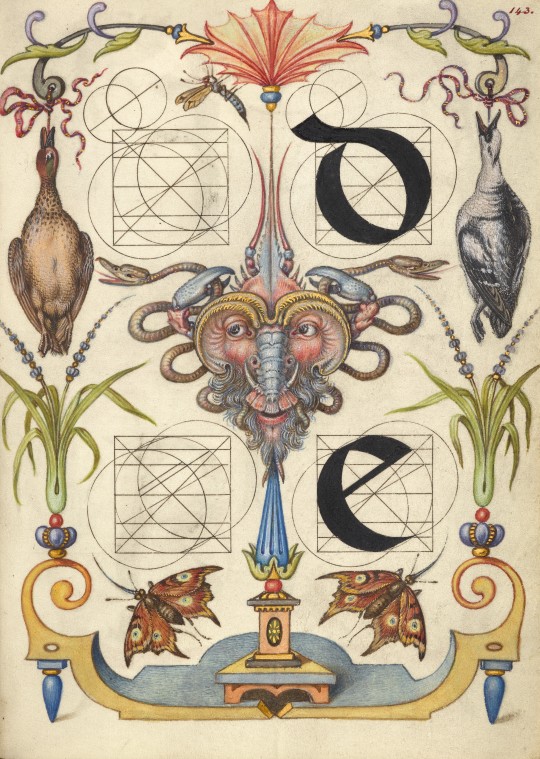
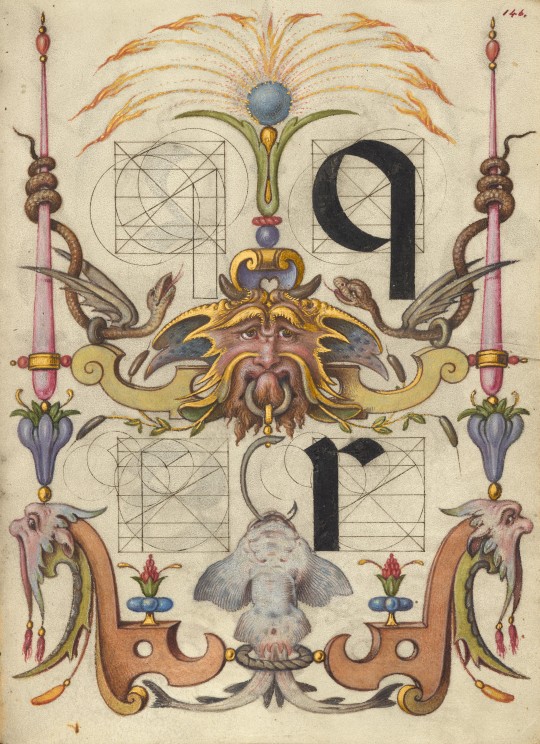
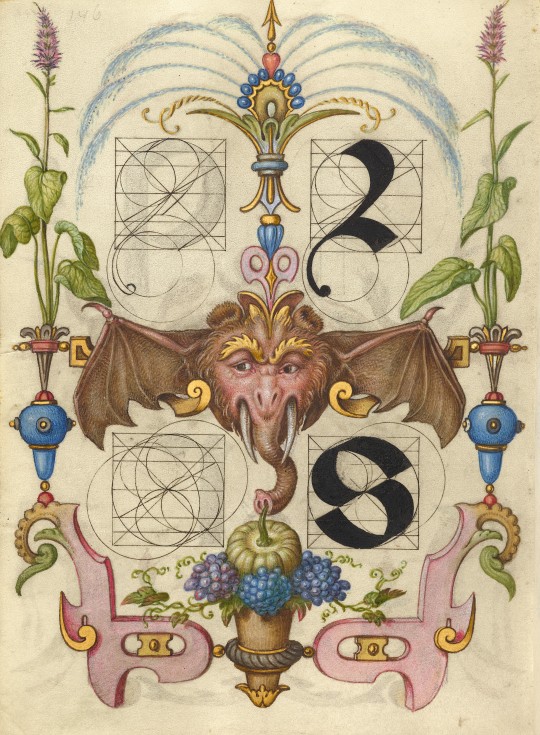

"guide to the construction of letters"
pages from the "model book of calligraphy", vienna, originally created by georg bocskay from 1561-62, illuminated and expanded by joris hoefnagel, c. 1591–96
source: Getty Museum Collection, Ms. 20 (86.MV.527), fol. 143r-147r
#16th century#joris hoefnagel#mira calligraphiae monumenta#model book of calligraphy#guide to the construction of letters#georg bocskay#calligraphy#geometry#diagrams#hybrids#grotesques#illuminated manuscript
735 notes
·
View notes
Text

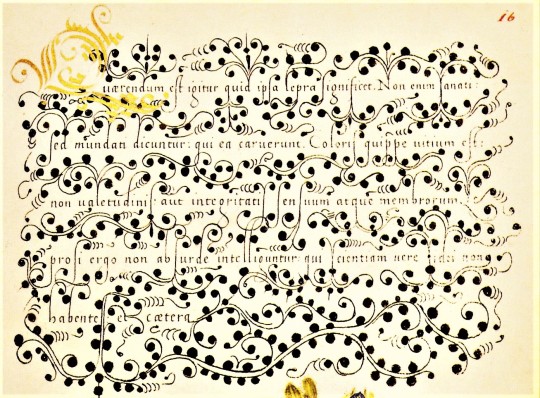

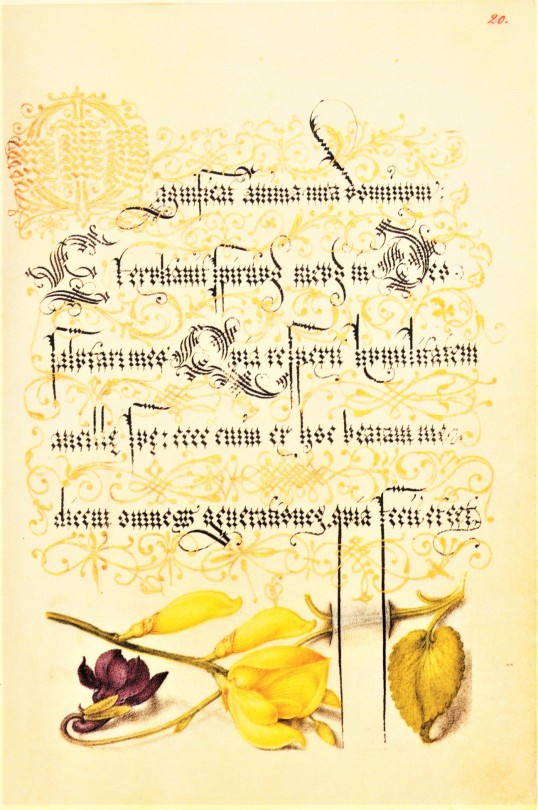









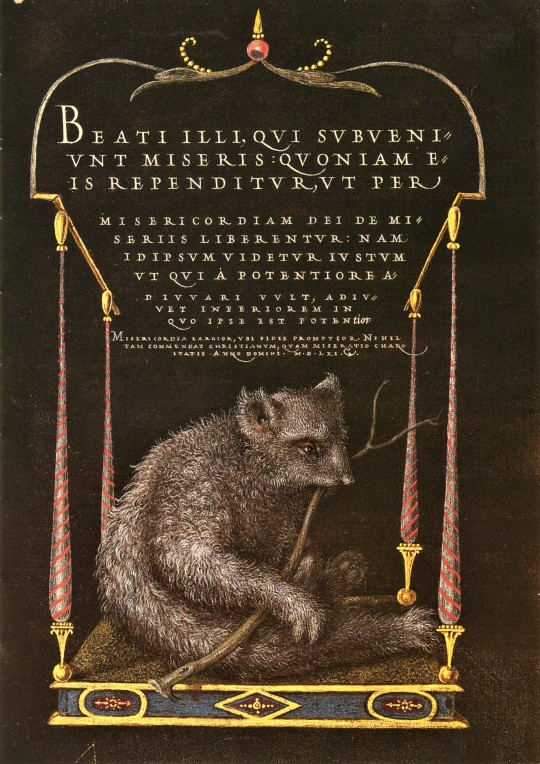
Typography Tuesday
We return to our facsimile of a 16th-cnetury calligraphic manuscript, Mira Calligraphiae Monumenta, or Model Book of Calligraphy, written in 1561/62 by Georg Bocskay, the Croatian-born court secretary to the Holy Roman Emperor Ferdinand I, and illuminated 30 years later by Flemish painter Joris Hoefnagel for the grandson of Ferdinand I, Emperor Rudolph II. The manuscript was produced by Bocskay in Vienna to demonstrate his technical mastery of the immense range of writing styles known to him. To complement and augment Bocskay's calligraphy, Hoefnagel added fruit, flowers, and insects to nearly every page, composing them so as to enhance the unity and balance of the page’s design. Although the two never met, the manuscript has an uncanny quality of collaboration about it.
Our facsimile was the first facsimile produced from the collection at the J. Paul Getty Museum in Los Angeles. It was printed in Lausanne, Switzerland by Imprimeries Reunies and published by Christopher Hudson in 1992.
View another post from Mira Calligraphiae Monumenta,
View more Typography Tuesday posts.
#Typography Tuesday#typetuesday#Mira Calligraphiae Monumenta#or Model Book of Calligraphy#Georg Bocskay#Joris Hoefnagel#illuminated manuscripts#manuscripts#manuscript facsimiles#facsimiles#calligraphy#letter forms#letters#J. Paul Getty Museum#Imprimeries Reunies#Christopher Hudson#Ferdinand I#Rudolph II
827 notes
·
View notes
Text
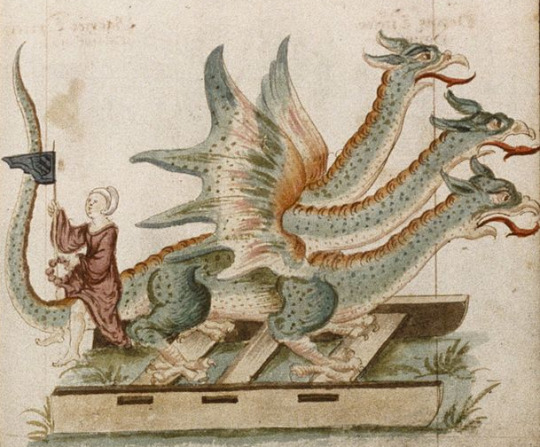
Joris Hoefnagel
26 notes
·
View notes
Text
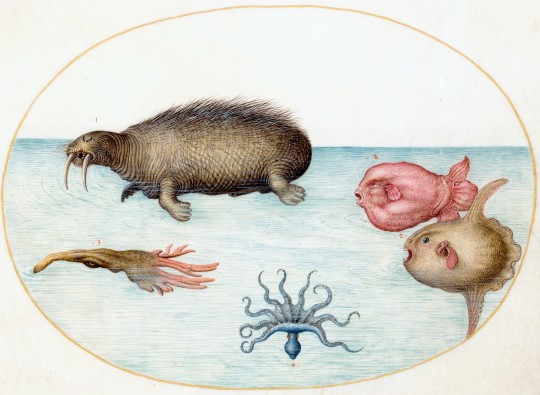
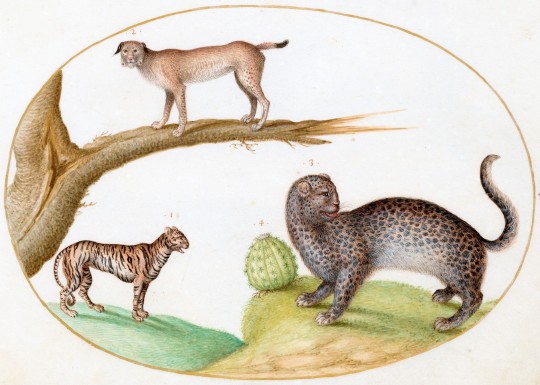
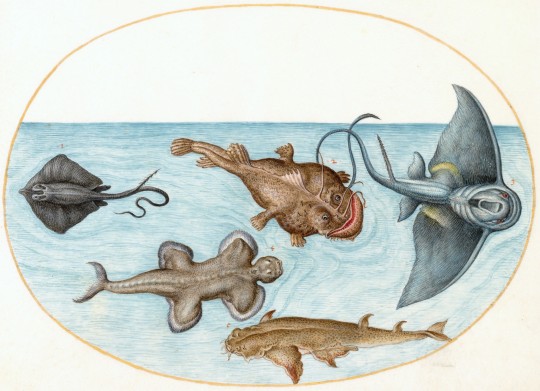



Watercolours by Joris Hoefnagel, ca. 1575. From the National Gallery of Art.
87 notes
·
View notes
Text

Joris Hoefnagel
Reptilia.
77 notes
·
View notes
Text

Crested Crane Fly, Insect, and French Rose
Joris Hoefnagel (Flemish / Hungarian, 1542 - 1600)and Georg Bocskay (Hungarian, died 1575)
1561–1562; illumination added 1591–1596
Watercolors, gold and silver paint, and ink
Leaf: 16.6 × 12.4 cm (6 9/16 × 4 7/8 in.)
7 notes
·
View notes
Photo

White horse (between 1552 and 1601) by Joris Hoefnagel (1542–).
Gouache, on vellum.
Rijksmuseum
http://hdl.handle.net/10934/RM0001.collect.29401
Wikimedia.
65 notes
·
View notes
Text

Joris Hoefnagel (Flemish, 1542 - 1600), Two Mice, 1594. Original from The Rijksmuseum, digitally enhanced by rawpixel.
34 notes
·
View notes
Text




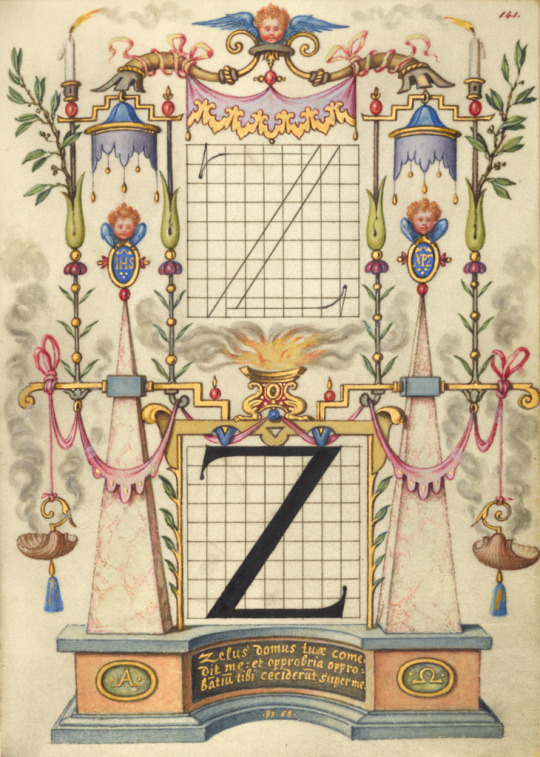
Guide to the Construction of Letters from the Mira calligraphiae monumenta illustrated by Joris Hoefnagel (about 1591–1596)
Getty Open Content
#quite possibly the most beautiful calligraphy guide I've seen#just looked up the first half of this book and oh my god it gets better#Joris Hoefnagel#renaissance illustration#calligraphy
9 notes
·
View notes
Photo
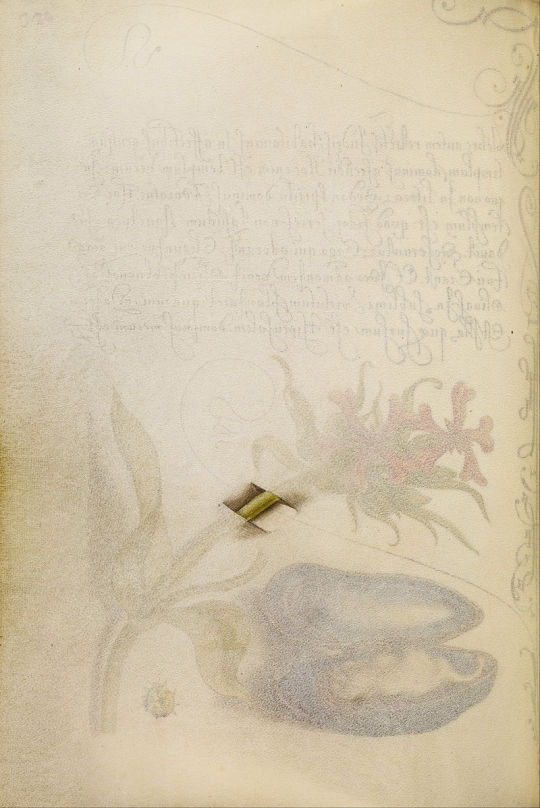
Trompe l'Oeil Stem of a Maltese Cross; Joris Hoefnagel, Flemish / Hungarian, 1542 - 1600; Vienna, Austria
4 notes
·
View notes
Text
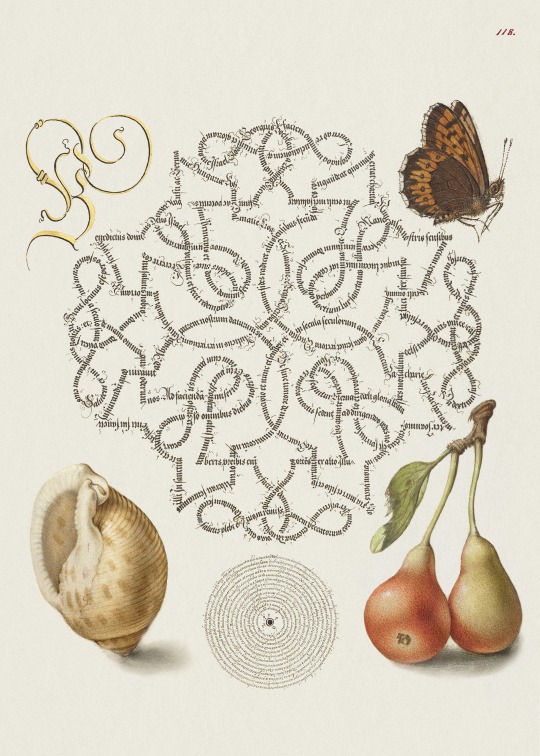


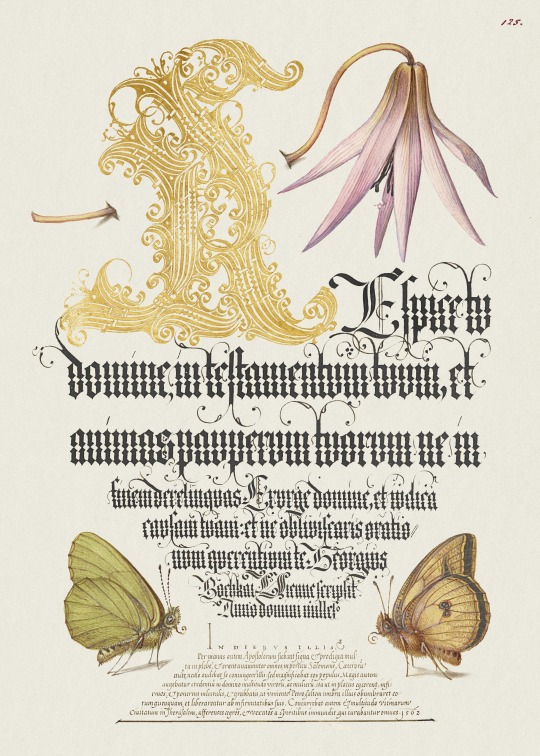



Mira Calligraphiae Monumenta: A 16th Century Calligraphic Manuscript Inscribed by Georg Bocskay & Illustrated by Joris Hoefnagel
Georg Bocskay, a master calligrapher & imperial secretary to the Holy Roman Emperor Ferdinand I, created Mira calligraphiae monumenta (Model Book of Calligraphy) as an exhibition piece. He assembled a vast selection of contemporary & historic scripts. Many of these selections were not intended for use, but for display. The manuscript demonstrated Bocskay's fine tuned calligraphy skills. Georg passed away in 1575, shortly after this book was written.
Around 30 years later, Emperor Rudolph II commissioned Europe's last great manuscript illuminator, Joris Hoefnagel, to embellish Bocskay's manuscript. In an attempt to out-do Georg's exemplary calligraphy work, Joris used every color, resource of illusionism, & form to devise brilliant grotesques - from flowers, fruits, insects, & animals to monsters & masks.
The end result is an incredible & unique collection of art & penmanship - "a landmark in the cultural debate between word & image."
#Georg bocskay#joris hoefnagel#calligraphy#mira calligraphiae monumenta#16 century art#16th century#model book of calligraphy
7 notes
·
View notes
Photo

Joris Hoefnagel (Flemish, 1542-1600)
“Plate 47: A Hare, ‘Jackalope,’ a Rabbit, and a Spotted Squirrel,” circa 1575-1580
From Animalia Qvadrvpedia et Reptilia (Terra)
Washington, D.C., The National Gallery
sources:
The National Gallery, https://www.nga.gov/collection/art-object-page.69793.html
13 notes
·
View notes
Photo

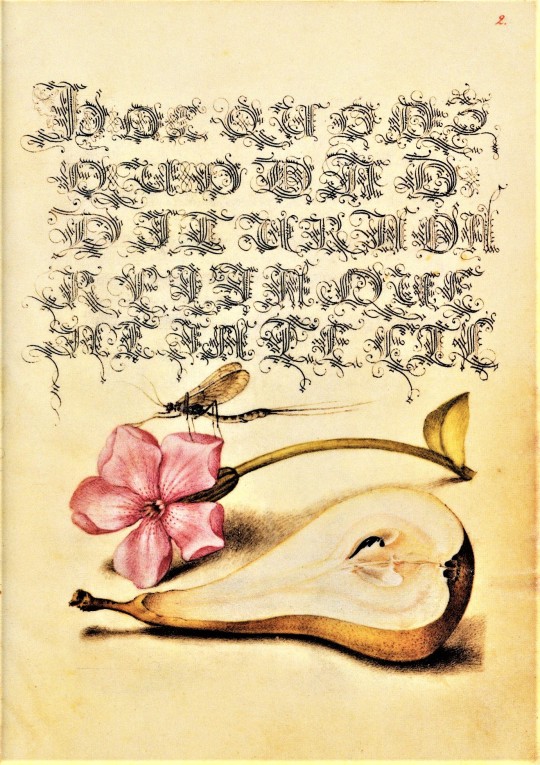
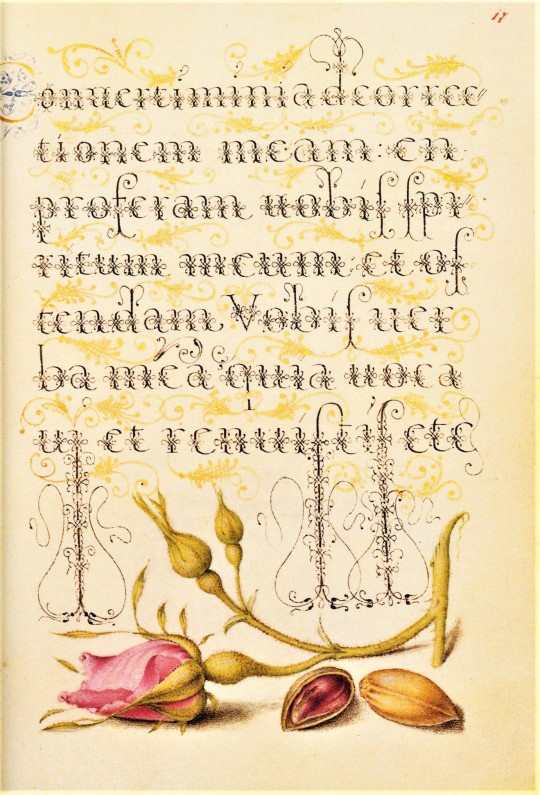




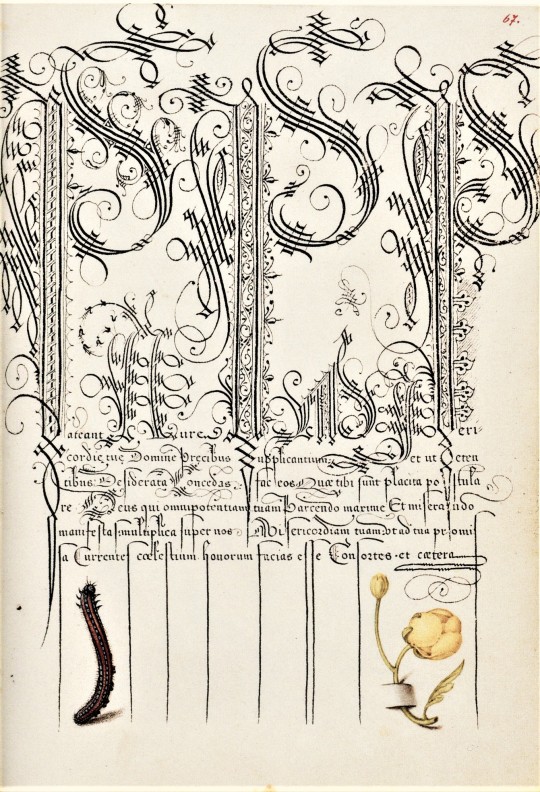


Typography Tuesday
Sometimes, things in our collection still surprise me, even after 29 years. From our fairly sizable manuscript facsimile collection, I was surprised I had never encountered this little (5 X 7 in.) reproduction of a 16th-cnetury calligraphic manuscript, Mira Calligraphiae Monumenta, the first facsimile produced from the collection at the J. Paul Getty Museum in Los Angeles, printed in Lausanne, Switzerland by Imprimeries Reunies and published by Christopher Hudson in 1992.
As the relatively new invention of printing came to dominate the production of books by the 1500s, the calligraphic inventiveness of scribes became prized for their aesthetic qualities rather than their production value.
From 1561 to 1562, Georg Bocskay, the Croatian-born court secretary to the Holy Roman Emperor Ferdinand I, created this Model Book of Calligraphy in Vienna to demonstrate his technical mastery of the immense range of writing styles known to him. About thirty years later, Emperor Rudolph II, Ferdinand's grandson, commissioned the [Flemish painter] Joris Hoefnagel to illuminate Bocskay's model book. Hoefnagel added fruit, flowers, and insects to nearly every page, composing them so as to enhance the unity and balance of the page's design. -- Getty Museum Collection webpage.
Although the two never met, the manuscript has an uncanny quality of collaboration about it.
Today we only show 11 pages from the facsimile, but we hope to present more from this highly-inventive manuscript of calligraphic virtuosity in the future.

View more Typography Tuesday posts.
-- MAX, Head, Special Collections
#Typography Tuesday#typetuesday#Typography Tuesday#Mira Calligraphiae Monumenta#Georg Bocskay#Joris Hoefnagel#calligraphy#letter forms#letters#J. Paul Getty Museum#Imprimeries Reunies#Christopher Hudson#illuminated manuscripts#facsimiles#manuscript facsimiles#Ferdinand I#Rudolph II
125 notes
·
View notes
Text
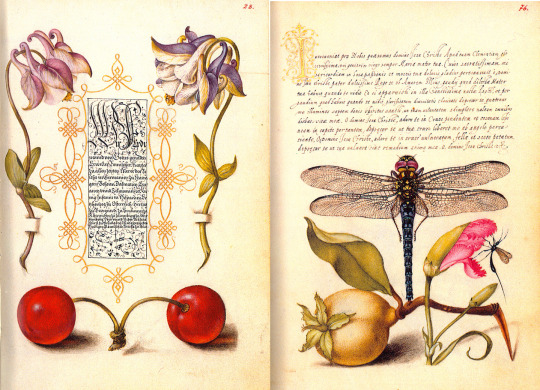

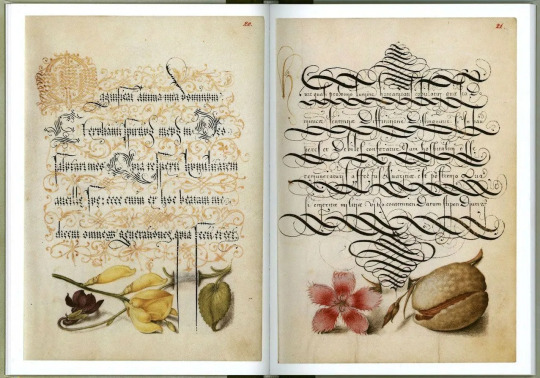

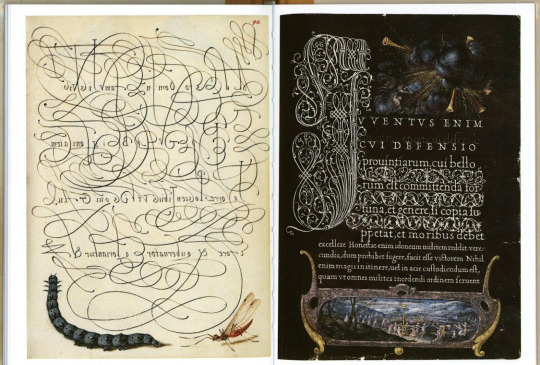
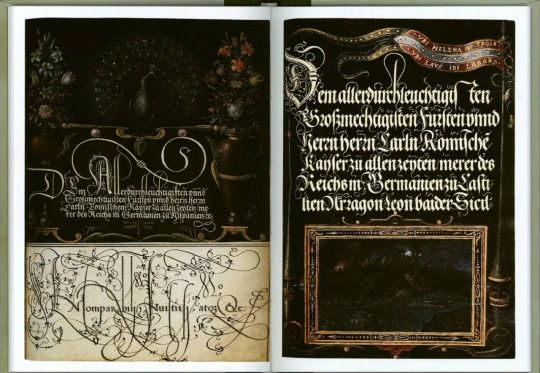
Joris Hoefnagel
#Joris Hoefnagel#medieval art#art#insects#callygraphy#gold#retro#vintage#illustration#fairytale#gorgeous#angelcore#butterfly#moth#fairy#flowers#plants#roses#rose#medieval#xvi#baroque#renaissance#classical art#phylosophy#watercolor#scientific illustration#old masters#dragonflies#botanical
9 notes
·
View notes
Text

Dianthus and Almond
from The Model Book of Calligraphy to Holy Roman Emperor Rudolf II, 1590s
Joris Hoefnagel (1542-1600, Flemish / Hungarian)
#dianthus#carnation#calligraphy#joris hoefnagel#almond#The Model Book of Calligraphy#16th century art#ancient book
4 notes
·
View notes
Text
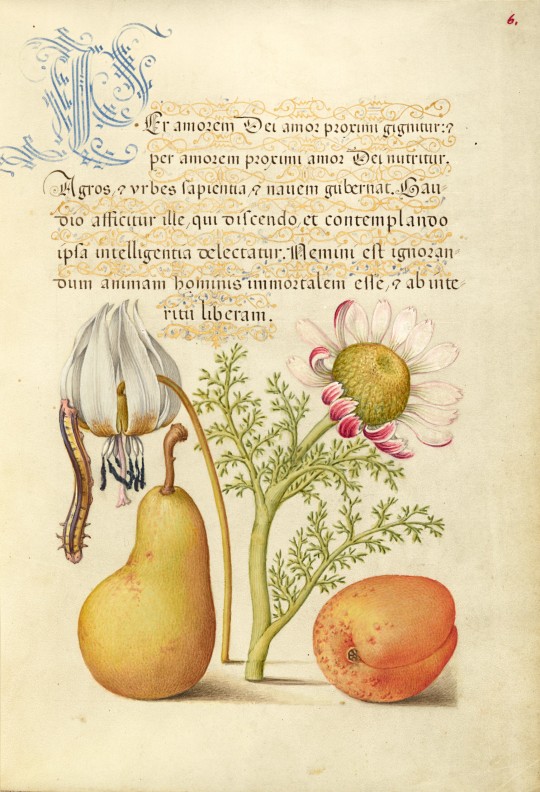
Caterpillar, Dog-Tooth Violet, Pear, and Apricot
1561–1562; illumination added 1591–1596
Joris Hoefnagel (Flemish, / Hungarian, 1542 - 1600), and Georg Bocskay (Hungarian, died 1575)
source
2 notes
·
View notes